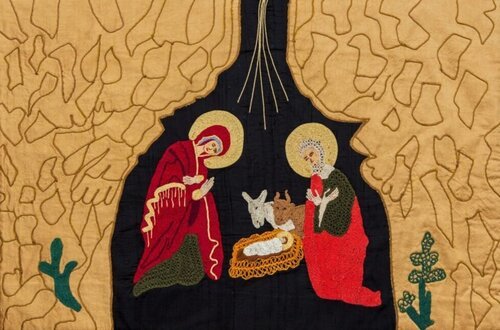These women are preserving the history of Palestine in beautiful tapestries
Weaving thousands of years of Palestinian history into beautiful tapestries: that’s what the Palestinian History Tapestry Project aims to do.
The tapestries, embroidered by Palestinian women in Palestine, Lebanon, and Jordan, illustrate the long history of Palestine from Neolithic times several thousand years ago to the present day.
The project was started by Jan Chalmers in 2012, who had worked for the United Nations in Gaza and was familiar with the rich history of Palestinian embroidery.
The not-for-profit project provides income for Palestinian women and enables them to support their families and celebrate their history and heritage through the traditional Palestinian art form of embroidery. The work of the embroiderers has been funded by charitable donations, and from sales of Palestinian embroidery.
Birth of Jesus of Nazareth in Bethlehem. Source: Palestinian History Tapestry.
Launch of the first phase
The first phase of the project was completed in 2018, coinciding with the 70th Anniversary of the Nakba — the ethnic cleansing of Palestine in 1948, which resulted in the forcible removal of 700,000 Palestinians from their homes, and the creation of the State of Israel.
The Palestinian History Tapestry project aims to draw attention not only to Palestinian history and heritage, but also to the internationally declared right of Palestinians to return to their homes.
“We have on this land that which makes this life worth living” — Mahmoud Darwish, Palestinian National Poet. Source: Palestinian History Tapestry.
Since the first launch, the project has also been on display at the Palestine Expo in July 2019.
You can view the entire tapestry on the project website.
Supporting the project
You can support the Palestinian History Tapestry project by making a donation or a purchase via the online store.
Spread the word among family and friends, and subscribe to the project’s quarterly newsletter for updates.

